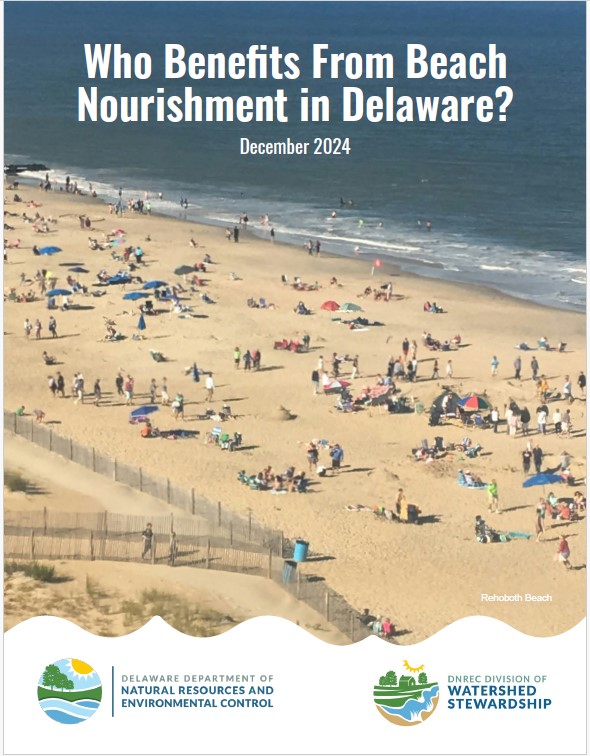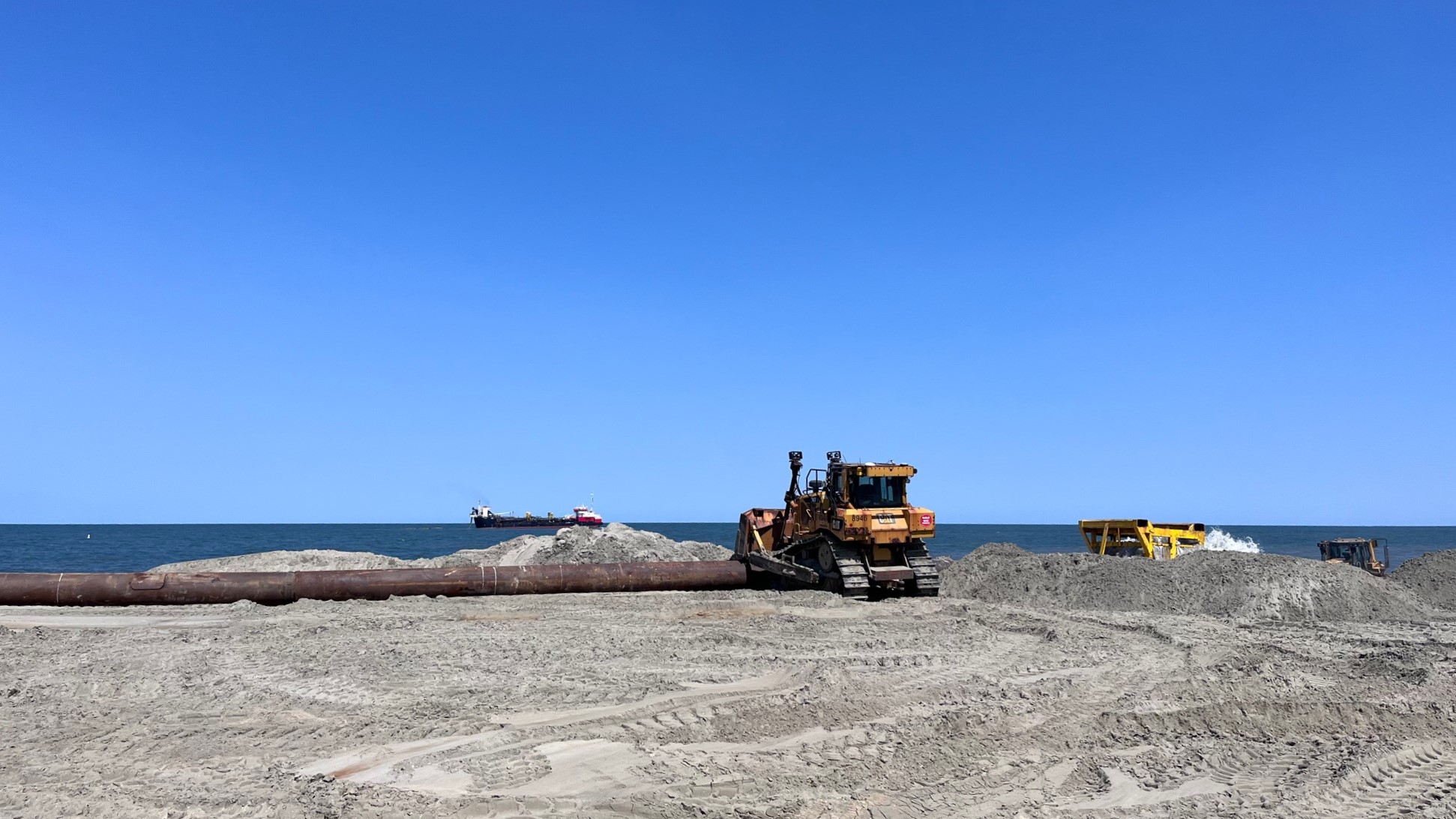The Department of Natural Resources and Environmental Control (DNREC) has released a study that investigates the economic benefits of beach nourishment and begins to explore a more equitable policy to share the cost of these projects with the people who benefit from them.
Delaware’s beaches and dunes protect inland public and private infrastructure, including houses and roads, from wave action that causes erosion during coastal storms. The dunes and beaches along the Atlantic Ocean and Delaware Bay also provide recreational opportunities and habitat to an array of plants and animals.

Delaware’s beaches are increasingly threatened by storms that batter the coast, removing sand and making coastal communities and ecosystems more vulnerable.
Beach nourishment projects restore the sand that erosion moves away from the beach, helping to maintain a beach and dune system that can protect communities, infrastructure and wildlife habitat from coastal storms.
Since the 1950s, beach nourishment projects cost-shared by DNREC and the U.S. Army Corps of Engineers have infused enormous volumes of sand into beach locations along the Atlantic Ocean coast and the Delaware Bay.

The study — Delaware Economic Analysis for Shoreline Management — looked at 11 beach sites that have been regularly nourished, offer public recreation and support coastal development. Experts in coastal processes and economics modeled the effects of nourishment projects on the coastal environment and evaluated how the nourishment projects reduce storm-related risks to communities, ecosystems and the economy.
The analysis looked at four key categories – infrastructure protection, recreation value, tourism impacts and ecological benefits – and identified how they are distributed among state, county and local populations.
Two community meetings were also held to inform the public about the study and garner feedback.
Read the full report or a summary report.
The study confirms that beach nourishment provides essential benefits to Delaware’s communities, ecosystems and economy. The distribution of these benefits varies according to the characteristics of the beach.
There are significant differences between the highly developed Atlantic Coast beaches that are popular tourist destinations, and the smaller Delaware Bay beach communities.
Local populations experience between 50 and 75% of total project benefits, depending on the beach. The remaining benefits occur at the state or county level.
Infrastructure protection is a key benefit across all project sites.
Recreation value is an important benefit at some beaches, but surprisingly less so at others.
Tourism impacts are relevant at Atlantic Coast beaches but not at Bay beaches.
Ecological benefits occur at all project sites but are generally more limited than other benefit categories.
Residents of the communities in this analysis experience social vulnerability primarily due to age.
Sand spreading creates benefits to neighboring communities along the Atlantic Coast.

The department pays for beach nourishment primarily using funds generated by the state accommodations tax – DNREC receives one-eighth of the funds raised by that tax specifically for shoreline management – and funds appropriated for Shoreline and Waterway Management by the Delaware General Assembly.
Due to rising demands and costs associated with beach nourishment, in the future DNREC will likely struggle to be able to sustain the current level of beach nourishment at current levels of funding.
Measuring the benefits provided by nourishment projects provides decision-makers with data-driven insight into how different groups benefit from these projects.
DNREC leadership will use the information from this study, combined with other useful information, to plan for future projects.
DNREC remains committed to maintaining Delaware’s beaches through both scientific research and policy development. This ongoing effort reflects the state’s dedication to balancing economic, ecological, and social priorities for the benefit of all Delaware residents.
Related Topics: beach nourishment, beaches, economic analysis, funding, ocean and coasts, shoreline, watershed, watershed stewardship, waterways